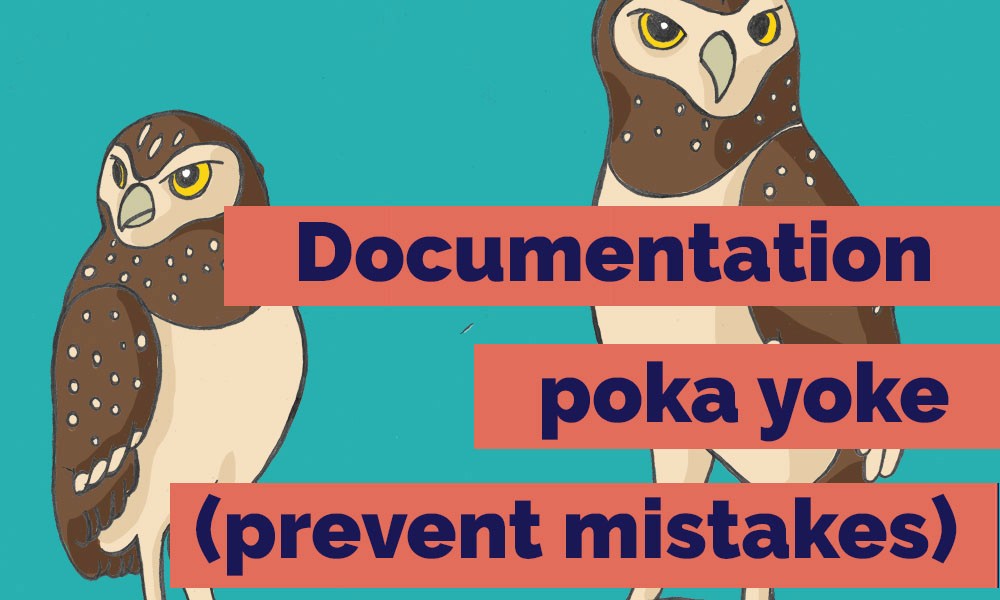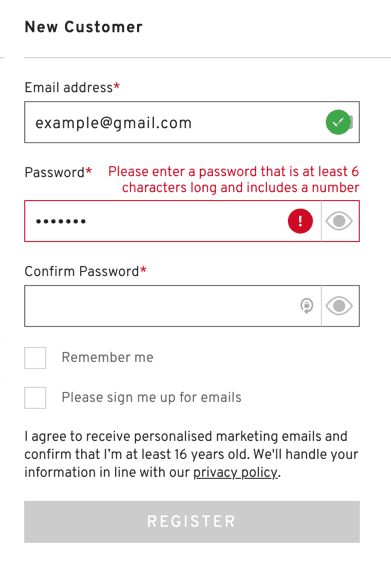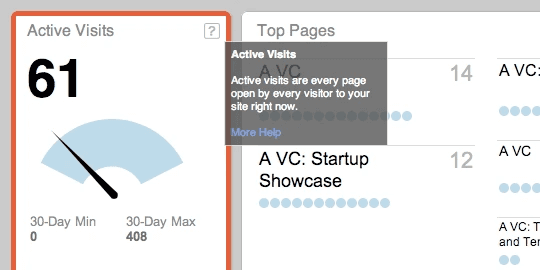All articles
How documentation can poka yoke (prevent mistakes) for users
While a lot of documentation can be corrective – that is, aimed at troubleshooting problems which have already occurred – there’s a powerful argument to be made that you should invest in preventative documentation.
Published
January 9, 2020
Category
How documentation can poka yoke (prevent mistakes) for users
Catherine Heath | January 9, 2019

Even the best laid plans can be foiled by human error. Especially in complex manufacturing processes, even small mistakes can lead to big problems later down the line – as one Japanese firm realized.
Just think of a simple example – withdrawing cash using an ATM. You’ve probably taken out money a thousand times. It’s easy and convenient, but that hasn’t always been the case.
The problem was, ATM customers used to leave their cards in the machine all the time. They just forgot to pick up their card after the transaction was complete. This was a huge process-error that caused customers massive inconvenience, and was also a major security risk.
Companies have solved this problem by rebuilding the system. Nowadays, customers have to remove their card before they can withdraw their cash and leave the ATM. The design of the system now prevents user errors, since people cannot move onto the next phase of the process before completing each vital step.
And that’s exactly what documentation can be used for – preventing errors. While a lot of documentation can be corrective – that is, aimed at troubleshooting problems which have already occurred – there’s a powerful argument to be made that you should invest in preventative documentation.
So what does all this have to do with Japanese manufacturing?
What is poka yoke?
Shigeo Shingo first coined the term “poka yoke” in the 1960s, and applied it to Toyota’s “Toyota Production System” (TPS).
“Poka yoke is a lean manufacturing tool that refers to “mistake-proofing” or “error-proofing” a process. In Japanese, poka yoke translates to “avoid” (“yokeru”) “mistakes” (“poka”).” – Tulip
During the car manufacturing process at the Toyota plant, Shingo noticed that workers were repeatedly making one mistake. They forgot to insert the spring under a button, and this mistake was reaching the customer in the form of a defective button.
Shingo redesigned the process using two steps regarding the spring.
Requiring the worker to insert the spring into a placeholder
Then requiring the worker to place the spring inside the switch
If any spring remained in the placeholder, the worker would immediately notice that they had failed to complete a vital step of building the switch. They could then move to correct the mistake, before it turned into a manufacturing defect.
Shingo called this process of error prevention “poka yoke”.

The Toyota factory – Image source
Studies show that humans are the least reliable components of manufacturing systems. Therefore, the benefits of Shingo’s new poka yoke system were numerous:
Higher quality products with fewer defects when they reached the consumer.
Saving money for the company not having to recall or repair defective products.
Saving time by solving problems at the source rather than trying to fix mistakes already made.
Fewer products and materials are wasted.
It also means that since poka yoke is built into the system, workers don’t require as much training because it’s not their responsibility to remember to prevent errors. Poka yoke has implications for better safety, since danger-prevention mechanisms can be built into the manufacturing process.
Examples of everyday poka yoke
“We talk all the time about how technologies can expand and amplify our talents. In truth, technology’s most powerful import may be to anticipate, mitigate, or terminate our casually self-destructive flaws.” – Michael Schrage, a research fellow at MIT Sloan School’s Center for Digital Business
The more influenced by technology our lives become, the bigger the chance gets for user error. Accidents with technology are so common that we can find many examples of everyday poka yoke to choose from. And it is usually technology itself that used to fill the role of error-prevention.
Household appliances (eg microwaves or washing machines) – household appliances are often incapable of being powered if the door is open.
Treadmills – there’s a high chance that treadmill users might fall over while running, so treadmills come with a clip they can attach to their clothes. If the person falls over, the clip is pulled, and the device stops moving.
Cars – driving is a relatively dangerous activity, and vehicles come equipped with many mechanisms of error-prevention. Cars often send out a signal if the door is open while the engine is running, or if one of the passengers isn’t wearing a seatbelt.
Elevator doors/subway doors – there are many public doors that will not close if the sensor detects that someone is in the way, and also trigger a loud noise as a warning.
Supermarket trolleys/wheelchairs/prams – some user-operated machines with wheels have automatic brakes that lock into place when the handle isn’t being depressed.
Online forms – inline instructions or dialogue boxes tell you when you have filled in a field incorrectly, or missed out information.
Computer software – the dialogue box that prompts you to save before you close a document, the one that informs you that you’ve neglected to attach a file to your email, or the spell checker that highlights misspellings or grammatical mistakes.
What can be so annoying is when everyday machines fail to take advantage of the possibility of poka yoke.
For example, when supermarket automated checkouts throw up repeated errors, apparently as a result of the user. They have not been designed to remove the possibility of human error. For example, problems often arise when trying to weigh items on the scale.
The human operator may lift up the item too quickly for the scale to register, resulting in a system error. Frustratingly, the person then has to wait for a human assistant to come along and fix the problem – throwing off the whole automated process.
2018 Hawaii false missile alert
Apart from buggy supermarket automated checkouts, there are other more jaw-dropping examples where poka yoke could have made a difference.
There was the famous news story of the mistaken Hawaii missile alert. On Saturday, January 13, 2018, citizens in the state of Hawaii were told over television, radio and cellphone to take shelter due to an incoming ballistic missile threat.
38 long minutes after the first message went out, state officials sent out another message informing citizens that the first had been a false alarm. The government later blamed the false alert on a miscommunication during a drill at the Hawaii Emergency Management Agency.
It turned out that a government employee had mistakenly issued the terrifying message, because they had not realized that a drill was going on. Not only was there no mechanism to prevent false alarms from being issued, it also proved very difficult to issue the second message recalling the alert.
For such an important process, implementing better poka yoke could have required a secondary authorization for the first warning. Also, the system designers could have included a way to easily issue a follow-up message if a mistake had been made.
Examples of poka yoke in Knowledge Management
Knowledge Management is an area that can have very important uses for poka yoke. There are many times in the working day when employees can make errors – errors that could have been prevented by proper Knowledge Management.
One industry where this problem is significant is the medical industry. People can be seriously harmed by preventable mistakes suffered during routine procedures, which lead to to complications and injuries for patients.
Geisinger Medical Group
Geisinger Medical Group started using a 40-step checklist to help surgeons performing bypass operations. Each step had to be followed in order to ensure that the correct quantities of drugs would be used, and so on.
Surgeons used Knowledge Management to cut complications during procedures. What’s significant is that at first, surgeons resisted attempts to impose checks on their work, but once they started using the checklists they came round to the idea.
Xerox Corp
In another example, this time in IT, on-site service engineers from Xerox were continually wasting time and resources fixing client products. They were essentially solving the same problems over and over again, without access to a shared knowledge base.
Xerox implemented a new system called Eureka, which engineers could use to document and share technical solutions. Eureka resulted in much reduced labor time and costs – for example, instead of replacing a $40,000 copier, engineers could simply order a replacement part for 90 cents.
How documentation can be used to poka yoke
Documentation is not just good for troubleshooting. It can also be used to head off potential problems.
You can use documentation to poka yoke for your users by inserting instructions directly into an interface. This is where contextual help really shines. For example, just look at inline instructions (a form of documentation) as an example of poka yoke.
When you fill in an online form such as this, the user cannot proceed without inputting the necessary information. Inline instructions appear informing users to use a password with a mixture of numbers and letters. The exclamation point symbol indicates that there is an error with the information already inserted. In-line instructions such as these are among some of the most common examples of user help.

Sign up form example
Also, the ‘register’ button is not clickable until users input the correct information into the form, which is another example of poka yoke built into the system. The user is prevented from proceeding until they have fulfilled every requirement of the current step.
Here are a couple more UI examples found via A List Apart:

Realtime content analytics software Chartbeat has employed tooltips in its dashboard display that provide more in-depth information on the purpose of each of its metrics. Users need to click on the question mark button to reveal the tooltips, and using documentation in this way prevents (poka yokes) users from falsely interpreting metrics.

GitHub goes even further by using context-sensitive help links to explain certain features in more detail. In this example, GitHub provides new users with instructions on how to create SSH keys in order to publish their code, linking to an in-depth article that adapts itself to suit either a MacOS or Windows operating system. This design decision streamlines the User Experience, and poka yokes the system.
Final remarks
There are many reasons why people make mistakes. We get distracted, we’re tired, we make false assumptions, or we just have a lack of experience. When designing systems, we should anticipate human errors and strive to prevent them.
Error-prevention is important not just for efficiency. It can actually save lives. During medical procedures, surgeons need to be sure that they have carried out every step perfectly. In the automobile industry, the final vehicle needs to be defect-free and safe enough to drive.
Poka yoke is beneficial for the manufacturing and medical industries, among many others. It helps in everyday life, and it can also be applied to documentation. If you’re designing a software system, think about where you can include documentation to ensure that errors are prevented before they happen.
Invest in the right tools for error-prevention. Take our knowledge base software KnowledgeOwl for a free spin.
{{snippet.authorCatherineHeath}}
{{snippet.Disqus}}

Written by
Catherine Heath
Catherine Heath is a contributor to the KnowledgeOwl blog. Learn about Catherine and check out her contributions.
Follow these 3 steps to improve your knowledge base
1
Get expert tips every month in your inbox
No spam, pinky promise.


2
Try the knowledge base software your team will fall in love with
Reduce tickets, make information easy to find.
Happier employees, happier customers.
3
Become the tech writer everyone respects
Check out our podcast, The Not-Boring Tech Writer.




























